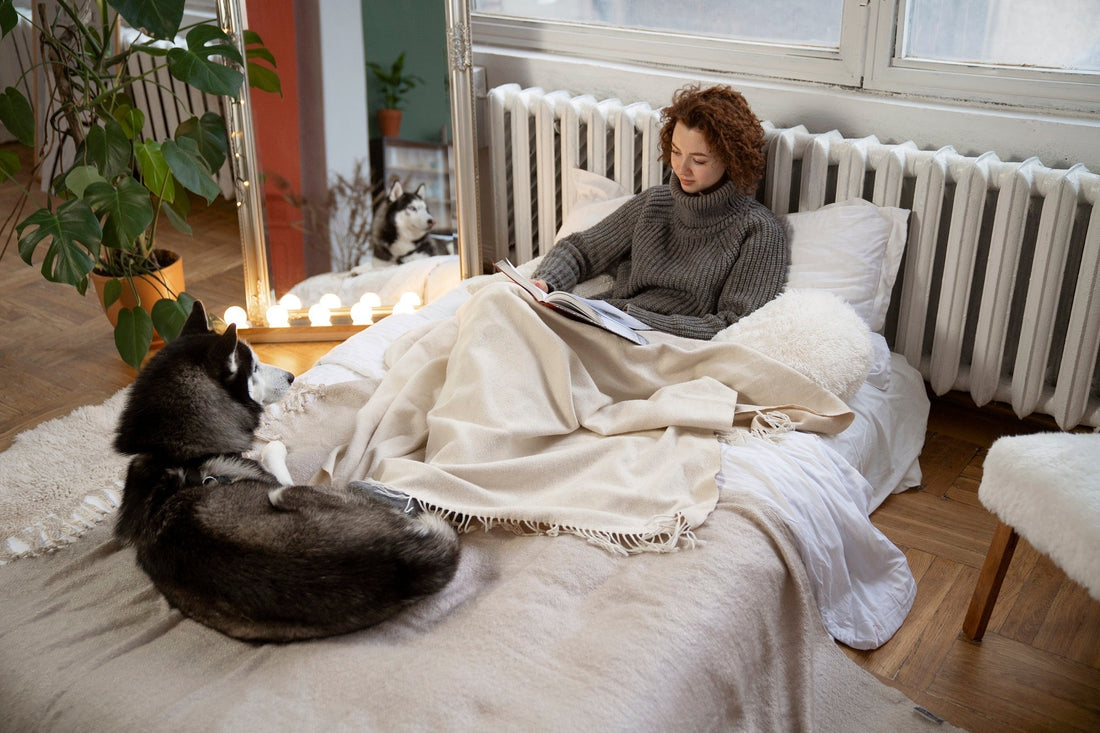As the seasons change, so do the demands of your bedding. Transitioning your bedding according to the season is not merely a matter of comfort but also a necessity for maintaining optimal sleep conditions. Summer and winter require different bedding materials to regulate temperature, ensuring you remain cool during the hotter months and warm when the cold sets in.
Seasonal bedding supports a healthier sleep environment. In winter, added layers like silk duvet covers provide warmth and help prevent chills or night sweats. In summer, lighter materials reduce the risk of overheating and promote deeper, more restful sleep. Recognizing these seasonal needs is important for overall well-being.
Additionally, rotating your bedding by season can extend the life of your linens. It reduces wear from constant use and gives you a chance to refresh your sleeping space, making it more comfortable and inviting.
Signs It's Time to Transition to Winter Bedding
Recognizing when to switch to winter bedding is key to ensuring a cozy and restful night’s sleep. One of the first signs is a noticeable drop in nighttime temperatures. If you’re reaching for extra blankets, wool filled pillows or waking up cold, it's likely time to make the change.

Seasonal discomforts, like a dry throat or nose, can also signal the need for warmer, moisture-retaining bedding. As the air gets colder and drier, bedding that offers added warmth can help maintain comfort.
Rising energy bills may be another indicator. Switching to more insulating bedding such as merino wool duvets, can reduce your reliance on heating, making your sleep environment both cozier and more energy efficient. Finally, shorter daylight hours often lead to changes in your sleep pattern. A warm, inviting bed can support this natural shift, helping you fall asleep more easily and improve your overall sleep quality.
Selecting the Right Materials for Winter Bedding
Choosing the right materials for winter bedding is essential for warmth and comfort. Flannel sheets are a popular option thanks to their soft texture and excellent heat retention. They trap body heat while remaining breathable, making them ideal for chilly nights.
Wool is another top choice, offering superior insulation without excessive weight. It also naturally wicks away moisture, keeping you dry and comfortable. For a lightweight yet warm option, down or down-alternative comforters are ideal. Available in various fill powers, they suit different temperature needs.
For allergy sufferers, hypoallergenic materials like cotton are a safe and cozy choice, especially when layered. If you're looking for a luxurious touch, silk offers heat retention and is gentle on the skin. Selecting the right materials not only boosts comfort but also supports a healthier sleep environment.
The Benefits of Layering Your Winter Bedding
Layering is an effective strategy for winter bedding, allowing you to adjust to changing temperatures. By combining different bedding types, you can customize warmth and comfort to your preference. Start with a fitted sheet as the base, add a flat sheet for extra warmth, then layer a medium-weight blanket like wool or fleece to trap heat. Finish with a duvet or comforter for additional insulation.
The advantage of layering is the flexibility to add or remove layers depending on the night’s temperature, keeping you cozy without overheating. Layering also enhances your bedroom’s decor. Mixing textures and patterns creates a visually appealing, inviting bed. Throws and decorative pillows can add color and style, making your bed a cozy focal point in the room.

Step-by-Step Guide to Transitioning Your Bedding
Switching from summer to winter bedding doesn't have to be overwhelming. Follow this step-by-step guide to make the transition seamless:
- Clean Your Summer Bedding: Before storing, wash and dry all summer bedding thoroughly to prevent mold and mildew.
- Assess Your Winter Bedding Needs: Check your inventory of winter bedding. Determine if you need to purchase new items or if existing ones are in good condition.
- Prepare the Bed: Strip your bed of summer linens. Vacuum the mattress and air it out to freshen up your sleeping environment.
- Layer Your Bedding: Start with the fitted sheet, followed by the flat sheet. Add a blanket, and finish with your choice of comforter or duvet.
- Add Decorative Touches: Incorporate throws or decorative pillows for added warmth and style.
- Store Summer Bedding: Properly pack away your summer bedding, ensuring it's clean and dry. Use breathable storage bags to keep them fresh for next season.
By following these steps, you ensure a smooth transition that enhances both comfort and aesthetics.
How to Maintain Your Winter Bedding
Maintaining your winter bedding is important for its longevity and comfort. Regularly wash sheets and pillowcases to remove dust and allergens. Blankets and comforters may require less frequent washing, but spot cleaning helps keep them fresh.
Always follow the manufacturer’s care instructions. Some materials, like wool, may need dry cleaning, while others can be machine washed. Using gentle detergent and cool water helps preserve fabric integrity. Make sure bedding is thoroughly dried before use.
Rotating your bedding is also effective for preventing uneven wear and extending lifespan. Proper care not only improves the appearance of your bedding but also supports a clean, healthy sleep environment.

Conclusion
Transitioning your bedding from summer to winter is not just practical but also an opportunity to embrace the seasonal change and create a cozy retreat. By understanding seasonal bedding, choosing the right materials, and following a thoughtful approach, you can make your sleep environment warm and inviting.
Layering, proper maintenance, and keeping up with trends enhance both comfort and style. Whether investing in luxurious items or opting for budget-friendly choices, there are many ways to achieve a cozy winter vibe.















